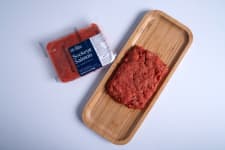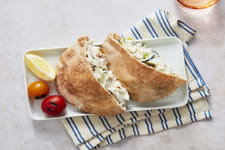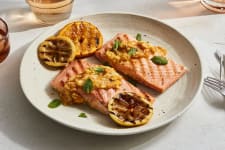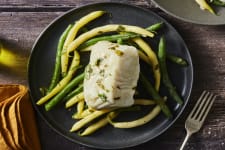If you’re a seafood aficionado, parchment paper is a must-have tool to have in your culinary toolkit. It comes in handy when you need a non-stick cooking surface while baking, and it’s indispensable for preparing meals en papillote, a French method of cooking that makes seafood shine.
Whether you’re using a bleached or unbleached product, parchment paper is a paper-based material that has been treated with silicone. That gives it its non-stick quality. You can essentially use it like a disposable silicone mat when cooking delicate fillets of fish in the oven; in fact, you can actually reuse parchment several times before it starts breaking down or absorbing oils and juices from meals past. Unlike silicone mats though, the papery qualities of parchment allow it to be shaped, making it a classic material of choice for steaming food en papillote, or in sealed packets.
All in all, if cooking seafood is your thing, parchment paper is going to be your best friend.
En Papillote for Beginners and Beyond
As a cooking method, preparing seafood en papillote looks gorgeous and sounds fancy. But it happens to be one of the most low-maintenance ways to cook anything, from prep to cleanup.
Even if you’re a total beginner in the kitchen, it’s really hard to mess up seafood en papillote since assembling the dish is practically a freeform process. When cooking en papillote, you’re simply creating a parcel of parchment to hold a portion of seafood, a bit of liquid, some aromatic ingredients and even a quick cooking starch like quinoa or couscous, which will all steam together effortlessly. There’s also no pot or pan to babysit while it’s cooking. And, as a gentler cooking method, there is little to no risk that you’ll be left with a dry, overcooked protein.
Technically, you can use aluminum foil to cook en papillote if you’re in a jam, but a parcel of parchment is better at holding in steam since the seams of the parcel will lay together more neatly. This means your seafood, and any other ingredients you’ve included in the packet, will steam efficiently and get a full infusion of aromas and flavors.
Even the superficial aspects of parchment paper will make you seem even more like a pro in the kitchen, as the presentation of food cooked en papillote in parchment makes for an elegant and exciting reveal at the table. Who doesn’t like opening packages filled with food? Just remember to mind the steam. P.S. Your seafood will look prettier in it’s puffy, paper-based parcel than in a bubble of crinkly foil.
Parchment for Health
Speaking of steaming seafood, using parchment paper to cook your seafood en papillote might help you make progress toward your health goals. If low-calorie, high-impact meals are your thing, then cooking en papillote let’s you pack tons of flavor into seafood without requiring the addition of excess fat. Of course, you could also add something like grass-fed butter to your packets, if your diet is built around getting more and higher qualities of fats. Either way, cooking seafood en papillote gives you a lot of freedom to control what you’re including in your meals, since practically anything can be cooked in a parchment paper packet.
A Time Saver
If you’re cooking en papillote, unless one of your parcels leaked, you probably won’t have any cooking surfaces or vessels to scrub during cleanup, saving you a considerable amount of time and energy.
Parchment-lined baking sheets also come in handy for fans of sheet pan meals for healthy meal prep or easy weeknight seafood dinners with the fam, which are time-saving approaches to cooking on their own. Especially when you’re baking or broiling seafood with a sugary marinade or topping like a maple-soy glazed fillet of salmon or sablefish, you’ll probably want to line your baking sheets with parchment paper. Those sugars caramelize into a delicious crust or glaze when exposed to heat, but this same sugar can become baked onto your pans.
With parchment beneath or around your seafood, cleanup is basically just a matter of rolling it up and tossing it in the garbage, giving you more time to kick back and digest your delicious, wild-caught seafood meal.






